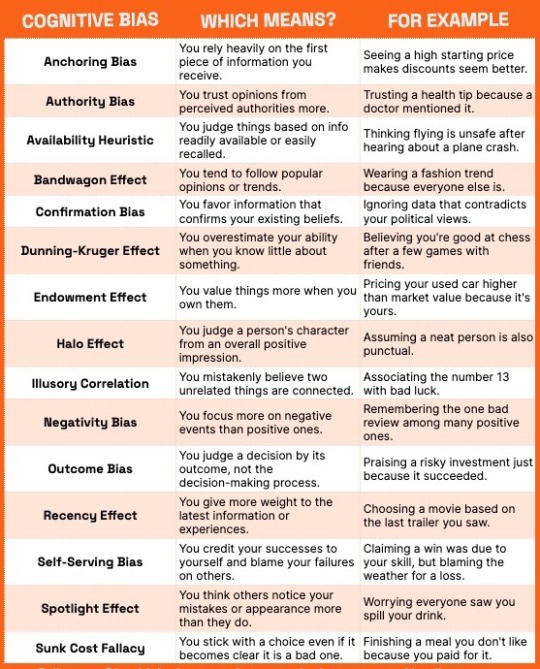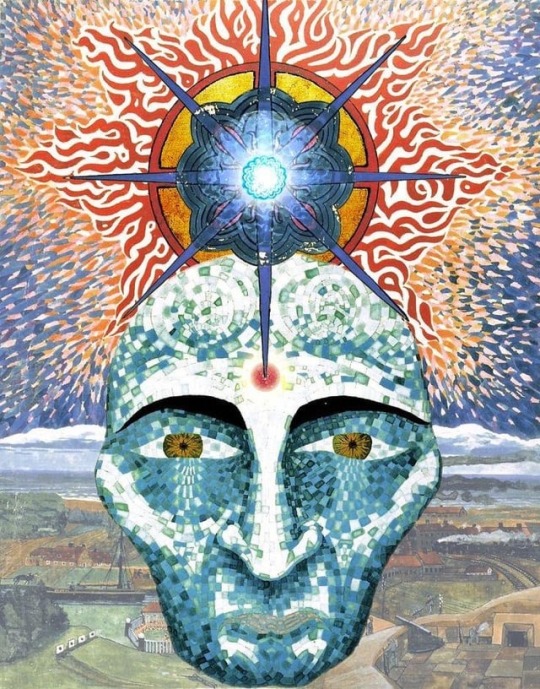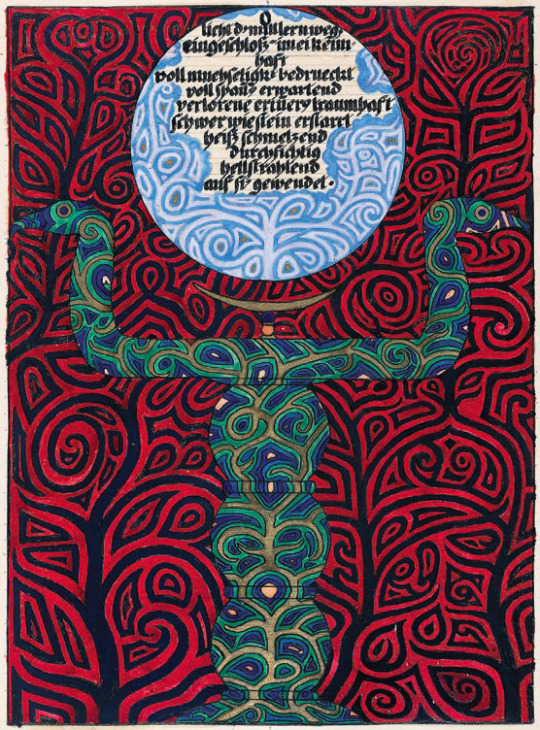#unconscious mind
Explore tagged Tumblr posts
Text

Carl Gustav Jung, Man and his Symbols First published: 1964
#carl jung#man and his symbola#cognitive ambiguity#ontological duality#shadow work#unconscious mind#academia#jung#words#dark academia#literature#quotes#quote#lit#books#books and libraries#reading#quote of the day#bookworm#book quotes#prose#booklr#bibliophile#excerpt#light academia#psychology#shadow#jungian psychology#psychoanalysis
196 notes
·
View notes
Text
The unconscious mind has no sense of time; thus the moment of terror, like the moment of desire, exists in an eternal now.
—‘Every Night, The Same Routine’

Art by @illuteridae 🖤
#joseph crawford#sigmund freud#unconscious mind#trauma#desire#doppelgänger#uncanny#dreamlike#innies and outies#macrodata refinement#gothic#severance#fan art
38 notes
·
View notes
Text

A list of cognitive biases
#cognitive bias#cool guides#pattern#judgement#rationality#psychology#bad decisions#decisions#rational choice#confirmation bias#cognition#jury trial#superiority#halo effect#outcome bias#correlation#dunning kruger#social influence#Unconscious mind
55 notes
·
View notes
Text
When having to decide the color of something, we may let our unconscious speak. So if you want, right after you're done with it, you can check which colors you are choosing or accepting/allowing (eg. for forniture, you may limit your choice to 2-3 colors) and which one/s you are rejecting (even just shades). Consider also where you need to use them, as that too may come into play. All this may tell you something about yourself, about what chakra is guiding you more and which one you are unconsciously blocking/having issues with.
Eg. for a sofa: if you rather choose red/orange color, you may feel scared/unsafe, in need of control for something or of being in your full power/show your authority. If you reject blue shades, you may have troubles expressing yourself, especially emotions, or understanding/talking as you put up some walls around to self-defend. You may feel uncomfortable with that. A flowery pattern may call for unconscious will of transformation/change especially in the matter of love (unaware of how to show/receive it).
It's something I have came to realize after witnessing a couple of situations, it may resonate or not
18 notes
·
View notes
Text
The Philosophy of Personality
The philosophy of personality explores the nature, origin, and development of individual identity and selfhood. It involves questions about the essence of what makes someone who they are, how personality is formed, the relationship between personality and free will, and how external and internal factors shape personal characteristics.
Here’s an overview of key concepts and perspectives:
1. Nature of Personality
Personality refers to the unique patterns of thoughts, feelings, behaviors, and experiences that define an individual. Philosophers examine whether personality is something inherent (fixed by nature) or whether it evolves over time (shaped by nurture and experience).
Essentialism vs. Existentialism:
Essentialism posits that personality is rooted in an essential nature that is relatively stable over time. This is often linked to the idea of a fixed "soul" or "self" that defines identity.
Existentialism, on the other hand, argues that personality is fluid, shaped by personal choices and life experiences. For existentialists like Jean-Paul Sartre, human beings are not born with a pre-defined personality but create themselves through actions and decisions. Sartre famously claimed, "Existence precedes essence," meaning that who we are is the result of our lived experiences, not an inherent nature.
2. Personality and Identity
Self-Identity: Philosophers such as John Locke have explored the link between personality and personal identity, especially how continuity of consciousness relates to being the same person over time. Locke's memory theory of identity suggests that we are the same person to the extent that we remember our past actions and experiences.
Psychological Continuity: Theories of psychological continuity focus on how personality and mental states over time create a coherent sense of self. If a person experiences radical changes in personality or memory loss, philosophers question whether they remain the same person.
3. Determinism vs. Free Will in Personality
Determinism: Determinists argue that personality is shaped by a combination of genetics, environment, and social conditioning. According to this view, free will plays little to no role in shaping personality because external factors like upbringing, culture, and biology predetermine how we think, feel, and act.
Free Will: Opposing this, many existentialists and humanistic philosophers believe that individuals have the power to transcend their circumstances and freely shape their personalities. Sartre argued that people are "condemned to be free," meaning that they must take responsibility for their actions and the personality traits they develop.
4. Personality and Moral Responsibility
Character and Virtue Ethics: Philosophers like Aristotle emphasized the role of character in shaping ethical behavior. According to Aristotle, personality traits like courage, temperance, and wisdom can be cultivated through practice and habit, leading to a virtuous life. In this view, personality is not just a collection of traits but something tied to one's moral development.
Moral Luck: A challenge in the philosophy of personality is the idea of moral luck—the notion that aspects of one’s personality may be shaped by circumstances outside of their control, yet they are still held morally accountable for their actions. For example, someone born with a naturally aggressive disposition may find it harder to behave ethically, raising questions about responsibility and fairness.
5. Personality and the Unconscious
The role of the unconscious mind in shaping personality has been a major topic of discussion, especially in the works of Sigmund Freud and Carl Jung. Freud proposed that unconscious desires and conflicts shape much of our personality, and many of our behaviors are driven by unconscious motives rather than rational choices.
Jung expanded on Freud’s ideas by introducing the collective unconscious, which he argued contains archetypes that influence individual personalities. These archetypes are universal symbols and themes that shape human experience and personality development.
6. Personality and Social Context
Sociological and Cultural Influences: Many contemporary philosophers and social theorists emphasize that personality is not developed in isolation but in interaction with society and culture. Social constructivism suggests that much of our personality is shaped by societal norms, values, and roles. According to this view, personality traits are often expressions of the expectations and constraints placed on individuals by their social environment.
Gender and Personality: Feminist philosophers like Judith Butler argue that gender, as a central aspect of personality, is a social performance rather than an inherent trait. In this sense, personality is something individuals enact within the framework of societal norms.
7. Personality and the Self
Concept of the Self: Philosophers debate whether there is a "core" self behind personality traits or whether the self is an illusion, constructed through interactions with the world. Some argue for a unified self, where personality is an expression of a consistent internal essence. Others, such as David Hume, believed that the self is a bundle of perceptions with no fixed identity, constantly in flux.
Narrative Identity: Some philosophers, like Paul Ricoeur, suggest that individuals create their identities through the stories they tell about themselves. Personality, in this view, is tied to the personal narrative that individuals construct over time, making sense of their past experiences and future goals.
The philosophy of personality addresses fundamental questions about identity, free will, morality, and the interplay between nature and nurture. It explores how much of who we are is determined by genetics, culture, or unconscious factors, and to what extent we have the power to shape our own personalities.
#philosophy#epistemology#knowledge#learning#education#chatgpt#psychology#Personality#Self-Identity#Free Will#Determinism#Character and Virtue#Nature vs. Nurture#Existentialism#Unconscious Mind#Social Constructivism#Moral Responsibility
16 notes
·
View notes
Text

The path is not a straight line. It is a spiral. You keep coming back to things you thought you understood and seeing deeper truths.
-Berry H.G
11 notes
·
View notes
Text
Jung therefore defines spirit, from the psychological angle, as the dynamic aspect of the unconscious. One can think of the unconscious as being like still water, a lake which is passive. The things one forgets fall into that lake; if one remembers them one fishes them up but it itself does not move. The unconscious has that matrix, womb aspect, but it also has the aspect of containing dynamism and movement, it acts on its own accord for instance, it composes dreams. One could say that composing dreams while one sleeps is an aspect of the spirit; some master spirit or mind composes a most ingenious series of pictures which, if one can decipher them, seem to convey a highly intelligent message. That is a dynamic manifestation of the unconscious, where the unconscious energetically does something on its own, it moves and creates on its own, and that is what Jung defines as spirit.
Marie-Louise von Franz, On Divination & Synchronicity: The Psychology of Meaningful Chance
90 notes
·
View notes
Text

Phantasy and Art: The Unconscious Bridge to Creation By Diana Yakobsson
In psychoanalytic theory, phantasy is a foundational element of the unconscious mind, influencing not only our dreams and desires but also the ways in which we engage with art. Far beyond idle daydreaming, phantasy is the engine of the psyche, a dynamic and ever-present force that shapes our experiences and expressions. When we examine art through the lens of psychoanalysis, particularly with an understanding of phantasy, we begin to see it as not merely an external object, but a symbolic manifestation of both the artist’s and the viewer’s unconscious.
Freud’s early work on phantasy linked it to the pleasure principle, suggesting that phantasies are unconscious wish-fulfillments—manifestations of desires that reality does not immediately satisfy. For Freud, phantasy provided an outlet for these desires, which are transformed through sublimation into higher, socially acceptable expressions, such as art. This sublimation is key to understanding why art resonates so deeply on a psychological level. It presents, in symbolic form, the very conflicts and desires that we carry in our unconscious, offering both catharsis and understanding without the need for direct confrontation.
Yet phantasy is not bound by the same rules as conscious thought. It exists in a timeless space, where past, present, and future intermingle. It is in this timelessness that phantasy connects so closely with art. A Renaissance painting can evoke the same emotional response in a modern viewer as it did centuries ago, not because of the historical context, but because it taps into universal unconscious themes—fears, desires, and conflicts that are timeless. In this sense, art is a medium through which phantasy is externalized, offering a way for both the creator and the viewer to engage with their unconscious in a safe and socially acceptable manner.
Melanie Klein, building on Freud’s concept, expanded the role of phantasy in her work with children, arguing that phantasies are present from the very start of life, shaping how we experience the world around us. In Klein’s view, phantasy is not merely a defense mechanism, as Freud initially posited, but a primary mode of psychic functioning. Phantasy, for Klein, is directly linked to our instinctual drives, operating alongside the mechanisms of defense that we use to protect ourselves from unbearable realities.
In this light, art becomes a way of working through these complex phantasies. A painting or a sculpture can symbolize repressed desires for love, autonomy, or power, while also representing fears of loss, rejection, or aggression. Even abstract art, with its lack of clear narrative or recognizable forms, speaks directly to the unconscious mind. The shapes and colors evoke emotions that are hard to articulate but deeply felt, allowing us to bypass the rational mind and connect directly with our phantasies. It is this connection that makes art so powerful and, for many, so therapeutic.
Art collectors, whether consciously aware of it or not, are often drawn to pieces that resonate with their own unconscious phantasies. A painting that evokes a sense of nostalgia or longing may reflect the collector’s unresolved conflicts, repressed memories, or unacknowledged desires. In this way, purchasing art becomes more than just an aesthetic choice; it is a way of externalizing and controlling the forces of the unconscious. The artwork serves as both a container for these emotions and a means of symbolic resolution.
The role of phantasy in art is not just one of creation, but also of interpretation. As viewers, we project our own unconscious phantasies onto the artwork, seeing in it reflections of our own inner world. This is why two people can have entirely different reactions to the same piece of art—because each is bringing their own unconscious conflicts, desires, and experiences to the encounter. Art, in this sense, is not something we merely observe, but something we feel, as it engages with the deepest parts of our psyche.
Freud’s notion of unconscious phantasy as a form of wish-fulfillment, and Klein’s extension of this idea to include even the most primitive and early stages of development, highlights the inextricable link between phantasy and creativity. Where Freud saw phantasy as a later development, closely tied to defense mechanisms, Klein placed it at the very heart of human experience, influencing not only our dreams and symptoms but also our thoughts, perceptions, and artistic creations.
In conclusion, art is a dialogue with the unconscious. It is a way of giving form to the formless, of externalising the internal. Through phantasy, the artist taps into the deepest layers of the unconscious, transforming raw instinctual energy into something tangible, something that can be shared and understood. And as viewers, we engage with art in much the same way—projecting our own unconscious phantasies onto the canvas, finding in it a reflection of our innermost desires and conflicts. This is the power of art: it is not just an expression of beauty, but a mirror of the soul, offering us a glimpse into the hidden phantasies that shape our inner world.
#psychology#psychoanalysis#artwork#fine art#psychoanalytic theory#art#art history#melanie klein#sublimation#collective unconscious#unconscious mind#dreams#symbols#philosophy#fantasy#timeless#aesthetic#emotions#emotional depth#emotional vulnerability
8 notes
·
View notes
Text



from Jung’s The Red Book
#jungian psychology#carl jung#jungian archetypes#jungian shadow#jungian analysis#jungian typology#psychology#psychoanalysis#Jung#books & libraries#sigmund freud#freudian psychology#mushrooms#esoteric#magick#mystical#mysticism#collective unconscious#unconscious mind#subconscious#subconciousmind#psychonauts#psychiatry#art#painting#red#blue#aesthetic
8 notes
·
View notes
Text

"One does not become enlightened by imagining figures of light, but by making the darkness conscious."
Carl Gustav Jung
#carl jung#jungian psychology#shadow work#depth psychology#making the darkness conscious#inner work#spiritual awakening#enlightenment quote#psychological quote#archetypes#shadow self#self discovery#conscious mind#unconscious mind#philosophy quote#esoteric wisdom#quote of the day#mental health awareness#inner journey#dark aesthetic
2 notes
·
View notes
Text
The Collective Unconscious: A Deep Dive into Jungian Psychology
The collective comprises memories, experiences, and symbols that are universally inherited. It also contains archetypes, which are innately understood symbols and themes that influence human thoughts, behaviors, and experiences. These archetypes are regul
OverviewWhat is the Collective Unconscious?Key ComponentsArchetypes and the Collective UnconsciousExamples of ArchetypesHow Does the Collective Unconscious Work?Who is Included in the Collective Unconscious?Where is the Collective Unconscious Located?The Origins of the Collective Unconscious Concept Overview The concept of the collective unconscious represents one of the most fascinating and…
#Astrologer#astrology#Awareness#collective unconscious#conscious mind#consciousness#Esoteric#Labyrinth#layers of consciousness#mind#numerology#Occult#Palmistry#Personal Blog#Spiritual#Tarot#Tarot Cards#unconscious mind
3 notes
·
View notes
Text
The Hidden Beast
A Reflection of the Disowned Self A cunning force moves through the unseen corridors of the unconscious, concealed within those who reject the parts of themselves they fear most. It does not wear horns or breathe fire, nor does it announce its presence with grand gestures. Instead, it drapes itself in the illusion of virtue, speaking with the tongue of righteousness while burying its most primal…
#awakening#Ego#false self#Morality#Personal Transformation#psychological depth#Self-Awareness#shadow work#Spiritual Growth#Unconscious Mind
2 notes
·
View notes
Text
Because it keeps the exploitation of major conflicts of women’s lives at an unconscious level, the Gothic romance is characterized by producing the Freudian Uncanny through initially depicting an exotic dreamworld of extreme emotions. This dreamworld then turns out to be another site for displacement where the familiar rules of the real world will indeed apply while assuming dimensions of Gothicism. It is exactly this double bind of the familiar and the fantastic that evokes the complex and intensive response in readers.
—Gothic Fantasy and Female ‘Bildung’

#edina szalay#sigmund freud#severance 2.09#repression#uncanny#unconscious mind#displacement#familiar#gothic terror#jame eagan#gothic#severance#severance spoilers
8 notes
·
View notes
Text
Everything in the unconscious seeks outward manifestation, and the personality too desires to evolve out of its unconscious conditions and to experience itself as a whole.
Carl G. Jung, Memories, Dreams and Reflections.
5 notes
·
View notes
Text
The Philosophy of Consciousness, Subconsciousness, and Unconsciousness
The study of consciousness, subconsciousness, and unconsciousness is central to philosophy, psychology, and neuroscience. Philosophers and scientists have long debated the nature of the mind, self-awareness, and the layers of mental activity that influence behavior, perception, and cognition. Here's an overview of the three concepts:
1. Consciousness
Definition: Consciousness refers to the state of being aware of and able to think about one’s environment, existence, thoughts, and sensations. It is the subjective experience of the mind, or what is often called "phenomenal experience"—what it feels like to be you at any given moment.
Philosophical Theories:
Dualism (René Descartes): Descartes famously proposed that the mind and body are two fundamentally different substances. According to Cartesian dualism, the mind is immaterial, and consciousness is a non-physical property of the mind. The body, on the other hand, operates like a machine.
Materialism/Physicalism: Materialists argue that consciousness arises from the brain's physical processes. According to this view, consciousness is a product of neuronal activity, and there is no separate, immaterial mind. Contemporary neuroscientific approaches align with this view, seeking to explain how brain activity correlates with conscious experience.
Phenomenology (Edmund Husserl, Maurice Merleau-Ponty): Phenomenologists focus on the first-person experience of consciousness. For them, consciousness is always consciousness "of" something (intentionality), and they explore how the mind structures experience.
Hard Problem of Consciousness (David Chalmers): Chalmers distinguishes between the "easy" problems of consciousness (understanding brain functions) and the hard problem, which is explaining why and how physical processes in the brain give rise to subjective experiences, such as the sensation of color or pain.
Panpsychism: This is the view that consciousness is a fundamental and ubiquitous feature of the universe, meaning that all matter has some degree of conscious experience, not just humans or animals.
2. Subconsciousness
Definition: The subconscious refers to mental processes that occur just below the level of conscious awareness. These processes influence thoughts, behaviors, and perceptions without being actively noticed by the individual.
Philosophical Perspectives:
Freudian Subconscious: Sigmund Freud introduced the concept of the subconscious (often used interchangeably with "preconscious" and "unconscious" in his early work). For Freud, the subconscious includes thoughts and desires that are not currently in conscious awareness but can become conscious when triggered (e.g., through memory or slips of the tongue).
Dual-Process Theories: Modern cognitive psychology divides thought into two systems: System 1 (fast, automatic, subconscious thinking) and System 2 (slow, deliberate, conscious thinking). Subconsciousness is often associated with System 1, where many decisions and impressions are made without conscious deliberation.
Carl Jung’s Collective Subconscious: Jung expanded on Freud's idea of the subconscious with the collective unconscious, a layer of the unconscious mind shared by all humans, filled with archetypes and universal symbols.
3. Unconsciousness
Definition: The unconscious refers to mental processes, desires, and memories that are entirely outside of conscious awareness and typically inaccessible to introspection. In psychological theory, the unconscious is thought to hold repressed feelings, unresolved conflicts, and primitive desires.
Philosophical and Psychological Perspectives:
Freudian Unconscious: Freud proposed that the unconscious mind is a repository for desires, fears, and memories that are too painful or socially unacceptable to acknowledge consciously. These repressed elements of the mind influence behavior in subtle and sometimes disruptive ways.
Id, Ego, and Superego: In Freud's structural model of the psyche, the id represents unconscious primal desires, the ego navigates reality, and the superego represents moral standards. The unconscious mind contains both the id and parts of the superego.
Jungian Unconscious: For Carl Jung, the unconscious mind is divided into two parts: the personal unconscious, which is unique to the individual, and the collective unconscious, a shared repository of human experience. The collective unconscious holds archetypes, symbols, and motifs that recur across cultures and history.
Philosophical Issues with the Unconscious: Some philosophers question whether it makes sense to speak of unconscious mental states. If a thought or desire is not accessible to conscious awareness, can it truly be said to be "mental"? This challenges traditional notions of mind and cognition.
Key Questions in the Philosophy of Consciousness, Subconsciousness, and Unconsciousness:
What Is the Nature of Conscious Experience? Philosophers debate whether consciousness can be fully explained through physical processes or whether something irreducible remains. The hard problem of consciousness remains one of the most pressing and unsolved issues in philosophy.
To What Extent Do Subconscious and Unconscious Processes Influence Behavior? How much of our decisions and perceptions are shaped by thoughts and feelings outside of our awareness? Psychological experiments have demonstrated that subconscious cues can powerfully affect behavior, challenging the belief in fully rational decision-making.
Is the Unconscious Real? Philosophical skepticism exists about whether unconscious thoughts and desires are truly "thoughts" if they cannot be directly experienced or known. Others argue that the unconscious is a necessary concept for understanding repressed feelings and psychological disorders.
Relationship Between the Three:
Consciousness represents active awareness, decision-making, and self-reflection.
Subconsciousness includes processes just below the level of awareness, such as habits, reflexes, or memories that can be brought into consciousness.
Unconsciousness involves deeper, hidden aspects of the mind, inaccessible to conscious introspection but influential in shaping desires, emotions, and behaviors.
The philosophy of consciousness explores self-awareness, subjectivity, and the mind-body problem. Subconsciousness refers to mental processes that influence behavior outside of immediate awareness. Unconsciousness deals with repressed desires and memories that operate beyond conscious thought. Each concept has rich philosophical implications for understanding the mind, free will, identity, and the nature of human experience.
#philosophy#epistemology#knowledge#learning#education#chatgpt#ontology#metaphysics#psychology#Consciousness#Subconscious#Unconscious Mind#Epistemology#Philosophy of Mind#Freud#Carl Jung#Hard Problem of Consciousness#Phenomenology#Cognitive Psychology
15 notes
·
View notes
Text
People Are Always Confessing Their Secrets
Uncovering Hidden Truths: Carl Jung's Work and How People Often Unconsciously Share Their Deepest Personal Truths Mistaking them for Universal Truths

Have you ever noticed someone react strangely to something you’ve said - maybe a twinge of discomfort, a sudden change in tone, or an awkward laugh? These moments can catch us off guard, but they often point to something deeper. Words have the power to resonate in ways beyond their surface meaning, striking chords in the nervous system of the person who receives them - revealing emotions or memories which can bleed into a perfectly normal and neutral conversation. I recently returned to The Essential Jung: Selected Writings Introduced by Anthony Storr. This was the very first of Carl Jung’s books I read around seven years ago. Since becoming a certified practitioner in holistic emotional wellness, I felt called to revisit Jung’s work. I wanted to explore this book again with fresh eyes - annotating it to the hilt. In the chapter which touches on Jung’s early works he discusses his work with word association tests. Within his classic test Jung would repeat around 100 universally well-known words. Asking participants to respond with the first word that came to their mind, as quickly as possible. He used a stopwatch to record the timing of each response, noted the specific word given, and observed any visible signs of disturbance in the person being tested. By repeating the entire test multiple times, Jung aimed to deepen his exploration into the subtle, unconscious responses triggered by these seemingly simple words. From the findings gathered through these tests, Jung was able to uncover emotional patterns and, most intriguingly, the aspects of themselves that participants wished to conceal. He often used these tests with criminals, aiming to elicit confessions indirectly - and it worked. The seemingly neutral process of associating words revealed hidden truths, exposing the unconscious layered dynamics that shaped their thoughts and behaviours. Because of course, a lack of a response was just as incriminating as any response that they could have given.

Unconscious confessions
One striking example Jung shares in the book reveals just how profound these tests were in uncovering hidden truths. During one such test, Jung discovered that the participant had been involved in a drunken altercation, where he had stabbed another person with a knife - a crime that led to a year in prison. Despite the man’s belief that he had buried this shameful memory, it was revealed through the word association test. Words like 'knife,' 'pointed,' and 'bottle' caused significant delays in his responses, accompanied by subtle signs of discomfort. These reactions, seemingly minor at first glance, spoke volumes about a deeply suppressed event—an event the participant thought was well concealed. While I was reading this my mind was alerted to the many times that I’ve found myself in situations where I unintentionally uncover hidden truths, much like Jung did - not with criminals - but with people in my everyday life. Since becoming a practitioner who handles emotions of many different clients day to day, understanding that words hold different weight for different people. I have become highly a-tuned to the confessions people make outside of the therapeutic space, without realising they are confessing anything. This became particularly clear when I would be having conversations with friends and say something which I felt was reasonably neutral - and a friend would get defensive and ask me to explain my word choice. My response was often:
“What I said was not objectively offensive, I was just expressing myself”
A good example of this happened with a friend who would visibly react whenever I mentioned my desire for wealth in this lifetime. They���d quickly interrupt to remind me how equally valid and important the working class are. While their intentions were likely well-meaning, it felt tone-deaf, especially considering I grew up in one of the most impoverished areas of Scotland. Isn't it possible for the working class to dream of more for themselves, just as anyone else can? Why can't we all hold space for our individual dreams while also working towards a better collective future?
Does me sharing a vision that feels warm in my chest become something shameful to someone entrenched in their own dogma—or perhaps, deep financial struggles that are more about their personal emotional blocks than a reality I need to be 'educated' on? So, words such as wealth, money, and holidays - neutral and broad topics for many people - would all result in our conversations heading south.
What does this tell me?
It tells me that this person was deeply uncomfortable about what it means to have, use, and cultivate money. This person has built a beautiful life for themselves, and yet, within their own limitations, there are areas of life that are quite neutral and open to me (after lots of EFT Tapping about money!) that are a no-go for them. Those topics would put them in a bad mood and make me regret bringing the topic up, even though it’s worth noting that this person was raised with a huge amount of wealth. This person was repeatedly defending the working class to me - the actual so called working class within this dynamic - while completely missing the fact that I was living in that very reality, having grown up in one of the most impoverished areas of Scotland and against the odds, built a life for myself which has outlived the expectations most people would put on the resilient and resourceful people labeled the ‘working class’ by people who see themselves as ‘not that’. This brings me back to Jung’s word association tests, where even a seemingly neutral word can trigger unconscious reactions, just like my friend’s defensiveness whenever I mentioned wealth. Jung’s tests highlighted how people inadvertently "tell on themselves," exposing insecurities, emotional conflicts, and unresolved issues through their reactions, even if they aren’t aware of it. These seemingly innocent responses carry deeper truths about the individual, much like how my friend’s defensiveness was less about me and more about their own unaddressed feelings around money and wealth.

Universal Truth or Unconscious Projection?
Becoming an EFT practitioner within the world of emotional wellness has shown me just how much people’s reactions reveal about their inner world. In my work with clients, I’ve seen that the things people resist or react to most are often the very areas where they hold unresolved emotional blocks. Just as Jung discovered through his tests, we are constantly telling stories about ourselves, but often without realising it. These stories that we tell are not always as objective as we think, yet we present them as such - making them feel like universal truths when they’re actually deeply personal, unconscious narratives.
How does EFT Tapping come into it?
It’s important to mention that through the self-acceptance that EFT Tapping offers, we can move beyond shame and develop a deeper understanding of our inner world. With courageous self-acceptance and the willingness to engage with our unconscious mind, we can begin to interact with others more openly, free from unconscious projections. Conversations, like the one with my friend, become opportunities to look beyond the surface and see the stories we each carry. When we start paying attention, we can begin to recognise the unconscious limitations others live within - often without even realising it - and, in doing so, approach each interaction with more compassion and understanding, while also honouring our own limits and boundaries.
What do I do?
I’m an EFT Tapping Practitioner (Emotional Freedom Techniques). It’s my life’s work to help others get clear on the essence of who they are and what feels authentic for them. My goal is to support people in creating lives filled with emotional fulfilment, purpose, and joy.
If this resonates with you, you can find out more about my work or reach out through my website: claire-farrell.com
It's my honour to hold space as we explore the beliefs and barriers holding you back—making room for your most authentic self to thrive.
You can also find helpful Tapping videos and fun updates on my Tiktok: @clairefarrell__ Lots of love, Claire
#Carl Jung#emotional wellness#emotional well being#mental health#eft tapping#Word Association#Unconscious Mind#Emotional Awareness#Self-Reflection#hidden truths#Projection#unconscious projection#Emotional Freedom Techniques (EFT)#Self-Discovery#Psychological Insights#Emotional Intelligence#Authenticity#Human Behaviour#Understanding Emotions
5 notes
·
View notes